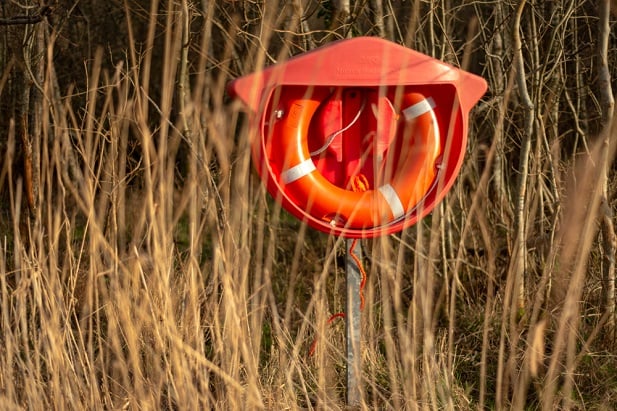 Holden Caulfield sought to be a 'catcher in the rye,'standing near the rye field's edge to prevent children from fallingover the precipice — or, you could say, looking out for their bestinterests. (Photo: Shutterstock)
Holden Caulfield sought to be a 'catcher in the rye,'standing near the rye field's edge to prevent children from fallingover the precipice — or, you could say, looking out for their bestinterests. (Photo: Shutterstock)
William F. Buckley, Jr., the popular late twentieth centuryphilosopher, in November 1955 may have defined the ultimate dutyevery fiduciary strives to fulfill. The short, now famous, linewithin his “Publisher's Statement” that accompanied the inauguralissue of his new magazine struck a tone so brave few could arguewith it and all would come to admire.
|Buckley wrote of the purpose of National Review in this way: It“stands athwart history, yelling Stop, at a time when no one isinclined to do so….”
|It was to be the creed of his new venture, but it offers an aptmetaphor for the fiduciary ideal, (see “A Fiduciary Must Confront The Fears and Fads ofMarket Cycles,” FiduciaryNews.com, June 11, 2019).
|To paraphrase Buckley, a fiduciary must stand athwart the windsof the market yelling “Stop!” at a time when no one is inclined todo so.
|No doubt the Yale-educated, former Firing Line host, andnationally syndicated columnist, who died in 2008, would appreciatethis sentiment. Buckley possessed a keen and variegatedintellect.
|In fact, he might go further than this metaphor and suggest apurer one more derivative from literature. He would have likenedthe best fiduciary as the one Holden Caulfield aspired to in J. D.Salinger's “The Catcher in the Rye” published in 1951 (the sameyear as Buckley's own best-seller “God and Man at Yale”).
|Salinger's book describes teenage angst in such a provocativemanner that it was widely banned just as the first wave of the babyboomer generation was peaking as teenagers. This made the book morealluring. Again, referencing a banned book might have been aninside joke to Buckley. He might have also liked the deliciousirony that, by forcing “The Catcher in the Rye” on so many highschool students, the book itself became the very mainstream itintended to rebel against.
|But enough literary digression. We're talking about the literarycharacter Holden Caulfield and his relationship to what today wecall “fiduciary duty.”
|Holden, bless his naive soul, sought to be a “catcher in therye.” In his mind, he would stand athwart the cliff on the edge ofa field of rye where children played. It would be his duty toprevent them from falling over the edge should they stray too closeto the precipice.
|In other words – and these are our words, not Holden's – hewould always be on guard, looking out for the best interests of thechildren.
|“Best interests.” You see what I did there?
|Retirement savers are playing the field of rye we call themarket. The cliff isn't a sudden market drop, but a potentially baddecision. The fiduciary's duty is to catch investors if they straytoo close to making a decision that isn't in their bestinterest.
|In this way, the fiduciary stands athwart the winds of themarket, yelling stop to the stampeding lemmings.
|READ MORE:
|A 3-word fiduciary rule — Carosa
||Complete your profile to continue reading and get FREE access to BenefitsPRO, part of your ALM digital membership.
Your access to unlimited BenefitsPRO content isn’t changing.
Once you are an ALM digital member, you’ll receive:
- Critical BenefitsPRO information including cutting edge post-reform success strategies, access to educational webcasts and videos, resources from industry leaders, and informative Newsletters.
- Exclusive discounts on ALM, BenefitsPRO magazine and BenefitsPRO.com events
- Access to other award-winning ALM websites including ThinkAdvisor.com and Law.com
Already have an account? Sign In
© 2024 ALM Global, LLC, All Rights Reserved. Request academic re-use from www.copyright.com. All other uses, submit a request to [email protected]. For more information visit Asset & Logo Licensing.








